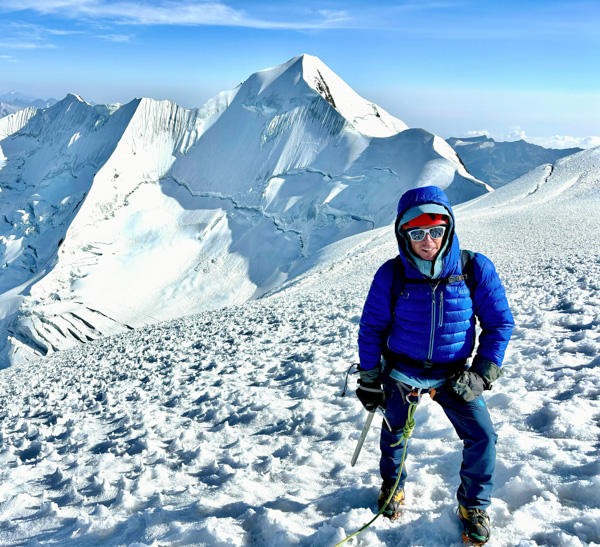
There’s no shortage of amazing mountains to climb in Bolivia. For mountaineers exploring the peaks near La Paz, in the range known as the Cordillera Real, one objective that should be at the top of the list is Illimani.
At 21,200 feet, Illimani is the tallest mountain in the region. If you’re sightseeing in La Paz on a clear day, its enormous, glaciated massif, with several summits, will grab your attention.
Its proximity to the country’s capital only adds to its appeal. From downtown, you can drive from your hotel to the base camp in a few hours, which is pretty convenient when considering how long an approach to a mountain of this height can take in other parts of the world.
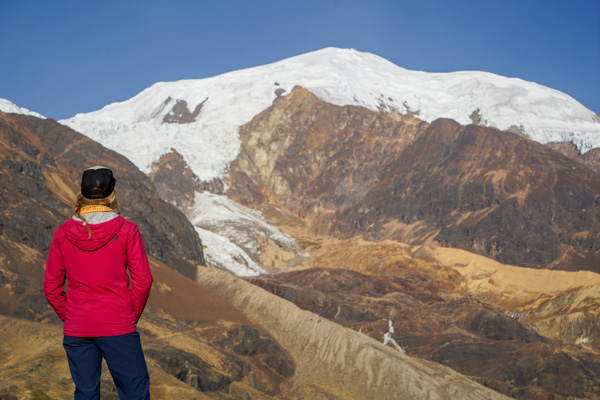
As we planned our Bolivia climbing trip, we set our sights on Illimani as the final, highest objective. We figured we could acclimatize on other nearby lower peaks– Pequeno Alpamayo and Huayna Potosi— and then make an attempt on this Bolivian giant at the end.
After succeeding on those lesser summits, we took a few rest days sightseeing at Lake Titicaca and made our way to Illimani with Juan as a guide and Delia taking care of the food. The scenic drive to base camp took a few hours, stopping at the village of Pinaya to sign in and pay a small fee for a climbing permit. By early afternoon, we were all at base camp in a pretty meadow just below 15,000 feet.
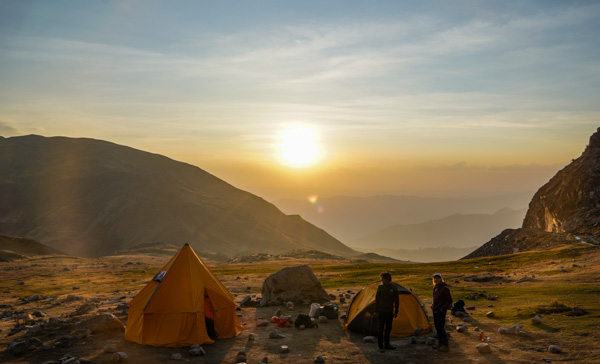
By now, we felt comfortable at that elevation and relaxed through the afternoon, watching the herders move their llamas around. Dinner was casual, and we went to bed early. The following morning, we packed up camp, and some porters we arranged took a lot of gear and started up to the high camp, known as Nido de Condores, “The Condor’s Nest.”
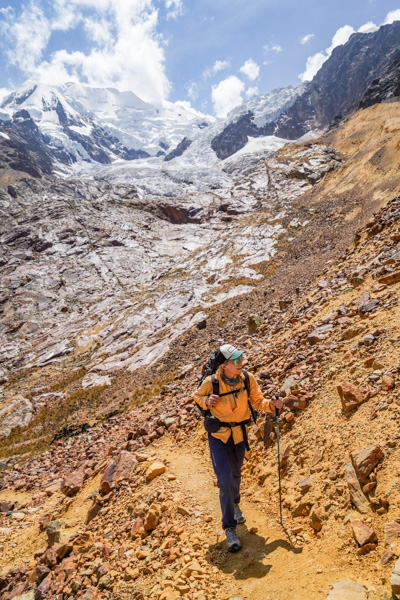
We followed them up the good trail, which eventually ascends a dry, rocky arete, to an excellent flat camp at the toe of the glacier at 18,000 feet.
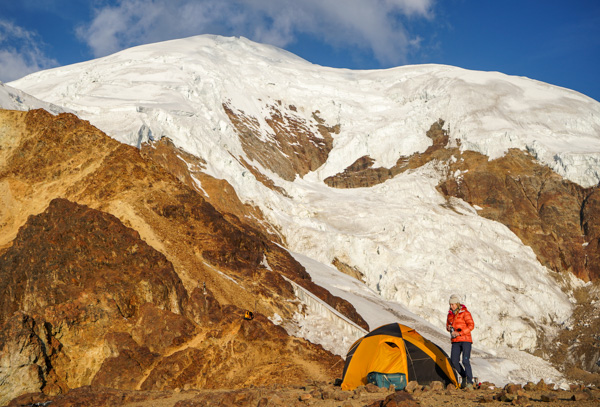
After setting up camp, organizing our gear for the climb, and having dinner, it was early to bed. The 1 am alarm clock would come quickly.
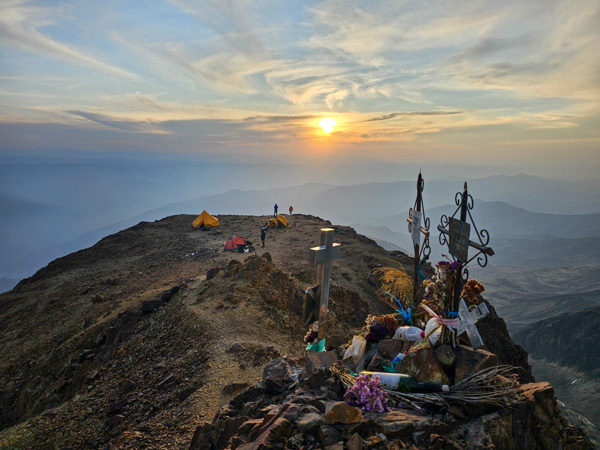
Early the following morning, after a quick breakfast and a couple of cups of coffee augmented with Starbucks Via’s, we ascended a dry trail for 20-30 minutes to the glacier’s edge. We put on all of our snow climbing gear and began up the firm snow under a starry night.
Time and effort can feel distorted during alpine starts. Sometimes things can drag, if you’re particularly sleepy it can seem like forever to make it to sunrise. In our case, our pace felt relaxed, and despite a section of tedious penitentes, we made our way higher on the mountain without feeling too worked.
As the sky brightened, we reached the route’s crux, a wide, steep crevasse to negotiate. The snow was entirely frozen, so all we needed was a small snow bridge to use, and with the help of a belay, we were up and above it and moving towards the summit.
The snow up high was very firm due to the late-season date and sunny daytime conditions. It was challenging to get the front points of our crampons to find purchase on the 40-degree face, the kind of extended movement that can cause your calves to burn from the effort. But in short time we had gained a summit ridge and were on more level ground to the summit in the distance.
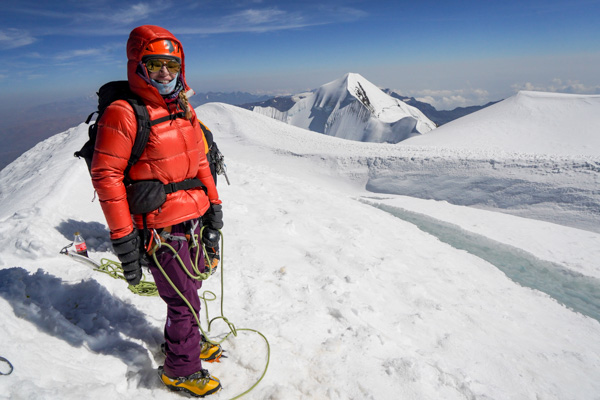
And soon enough, we were on the top of Illimani’s 21,200-foot summit, Pico Sur! It was a beautiful morning. Very cold, but sunny. The other peaks of our trip weren’t nearly as chilly; for the first time in our Bolivian adventure, we had on all the layers we brought in our packs.
Due to the temperatures and our desire to be down before the snow started to soften lower on the route, we only spent a few minutes up top and retraced our route. We had to lower each other over the crevasse, and once past that crux, it was straightforward walking back down to the Condor’s Nest.
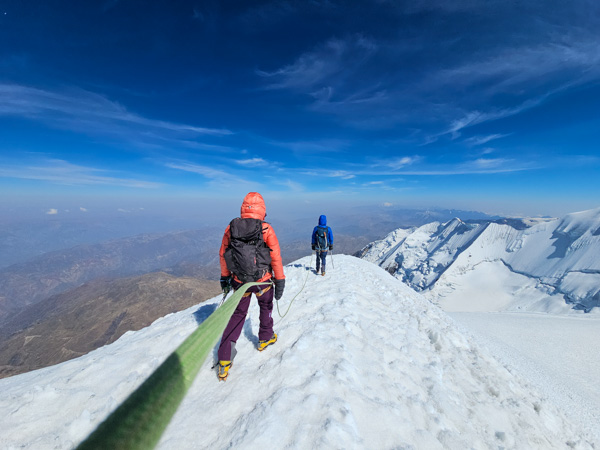
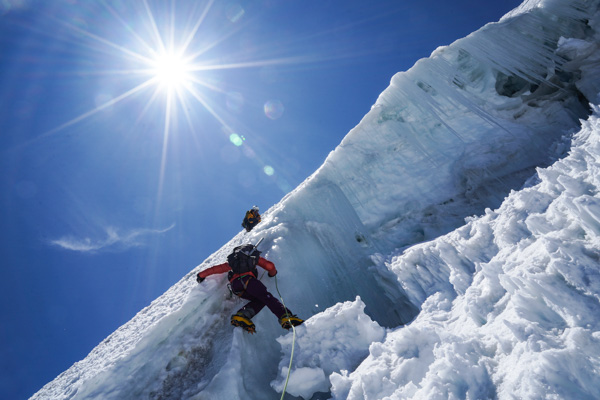
The celebration would have to wait. Our porters were at camp, so we packed up, broke down our tents as quickly as possible, and began the route down to the basecamp meadow.
We hit an unexpected obstacle as we approached the meadows where we had camped the day before. Due to the late afternoon and the sunny weather, the creeks that were easy to cross on the way up were swollen and flowing quite high with icy glacial meltwater. It wasn’t impassable, but the water was swift, and we had to be careful… an unexpected bonus crux of the day!
Once at the meadow, we had a discussion– should we camp and relax and drive back to La Paz in the morning? Or should we get on the road and get there that evening? It would be about a three-hour drive, and we wouldn’t arrive until 8-9 pm, but we all agreed it would be nice to get home.
So we hit the dirt road and made it back to the hotel that night.
What a fantastic day– we climbed the tallest mountain in Bolivia’s Cordillera Real in beautiful weather. Illimani was special. We would recommend it!

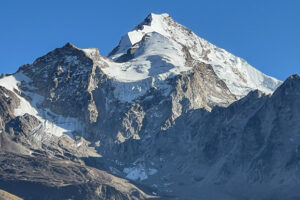
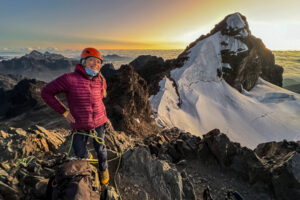

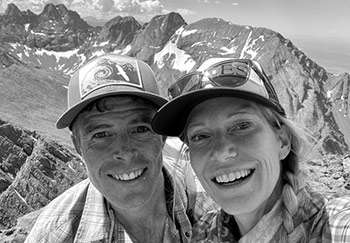






Leave a Reply